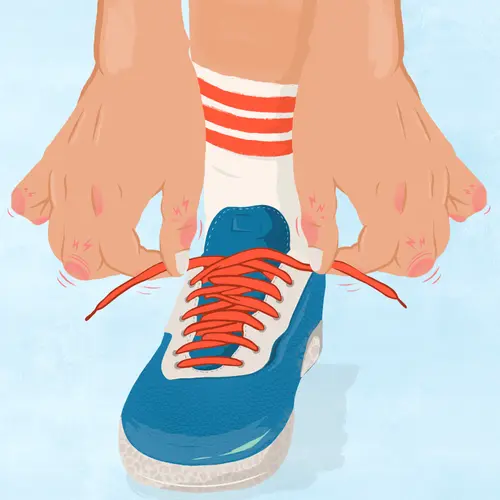Although stiff joints are a classic symptom of rheumatoid arthritis (RA), you can also get them for other reasons.
If it’s RA, joint stiffness and other symptoms such as pain or fatigue tend to develop and worsen over several weeks or months. It’s usually most noticeable in the morning. It often eases up after an hour or two, but it can last all day. You may feel it in these areas:
Track It and Tell Your Doctor
Make a list of your symptoms and when they happen. Do you notice them after a particular activity or first thing in the morning?
Note when your joint stiffness first began, and also ask yourself:
- Did it start suddenly?
- Does it come and go?
- Is it painful?
- Has it changed in intensity over time or moved to new joints?
See a doctor if your joint stiffness, pain, or swelling lasts more than 2 weeks. They may refer you to a rheumatologist, a doctor who specializes in arthritis and other diseases of joints, muscles, and bones.
At your appointment, share your list of symptoms and also mention anything that’s not related to your joints, such as fatigue or weight loss.
Your doctor may ask you to move the joint so they can see its range of motion. They will also check your joint for swelling, enlargement, and tenderness.
You might also take some blood tests to help find out what the problem is.
Treatment
If you have RA, early treatment can greatly limit joint damage. Your treatment plan will likely include these key parts:
Medications. There are different kinds of drugs that treat rheumatoid arthritis. You may need to take more than one. Some stop the disease from getting worse. Others ease symptoms of joint stiffness and pain.
Physical therapy and exercise. These will help you move better and with less pain. You can also use moist heat (like a warm shower) to loosen up stiff joints, and ice packs (or even a bag of frozen peas) to curb inflamed joints. Relaxation techniques also ease muscle tension. An occupational therapist can show you how to do everyday activities.
It's also important to get to, and stay at, a healthy weight, so you don’t stress your joints. If you’re not sure what your weight goal should be, ask your doctor.
Pace yourself. Switch between periods of rest and activity. At least once a day, gently move your joints through their range of motion. If needed, use assistive devices to make your daily tasks easier.

